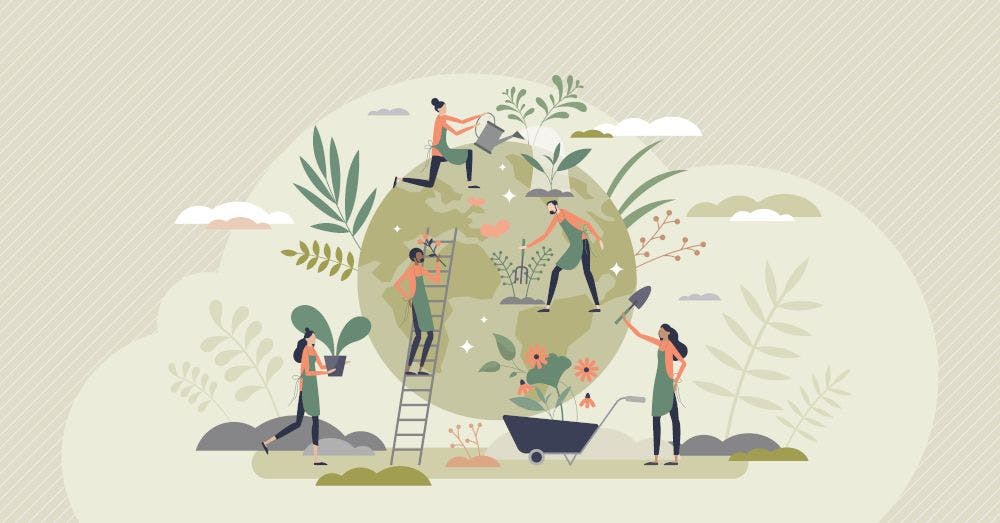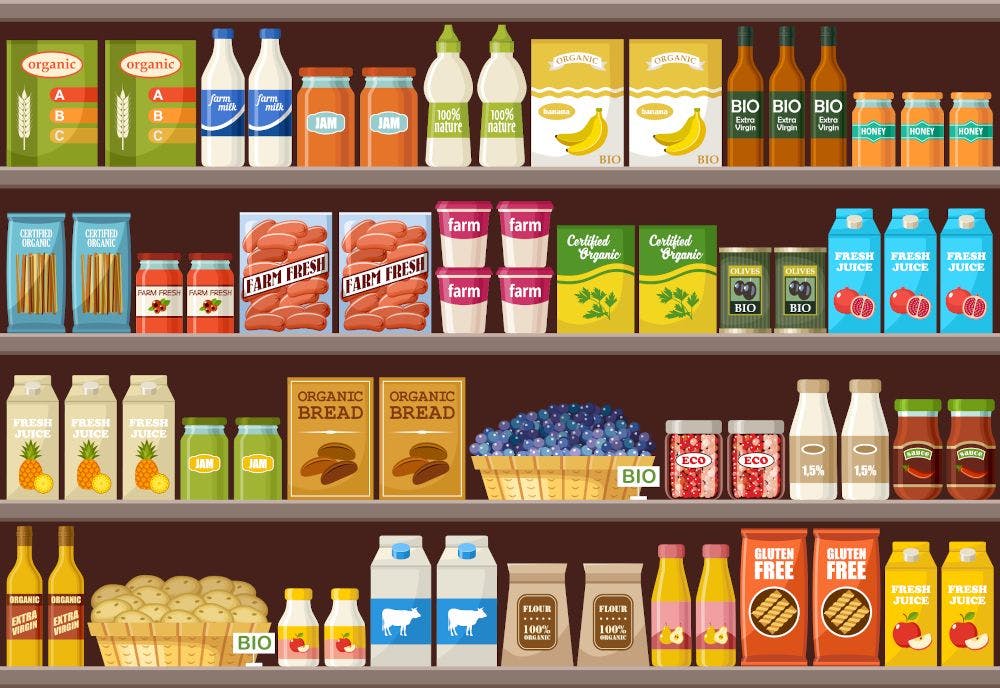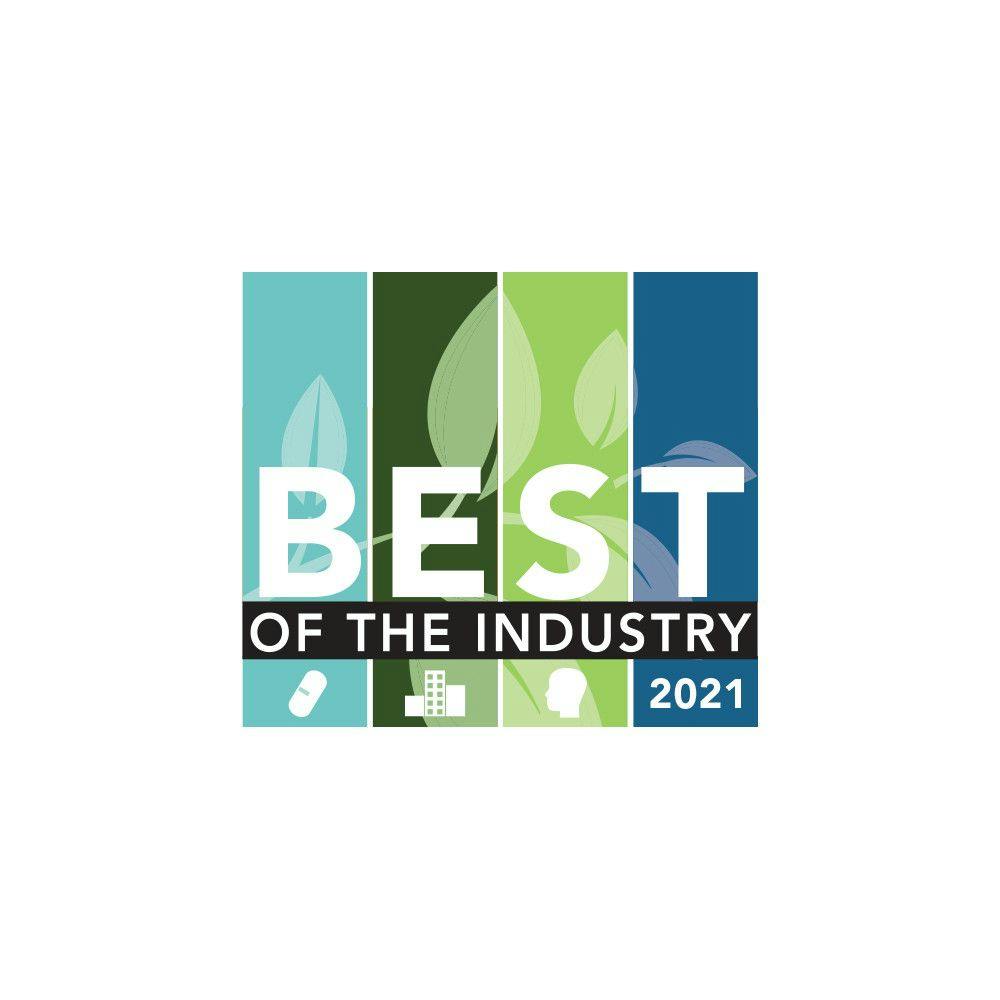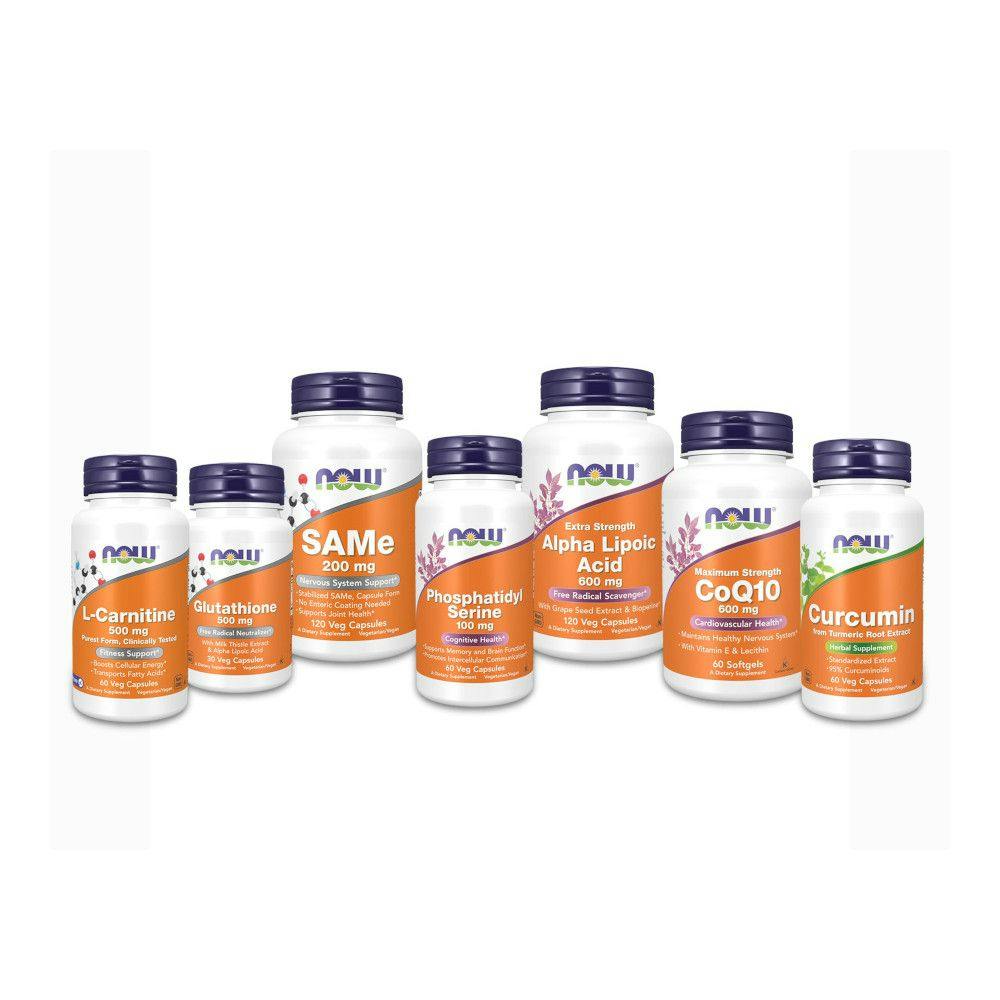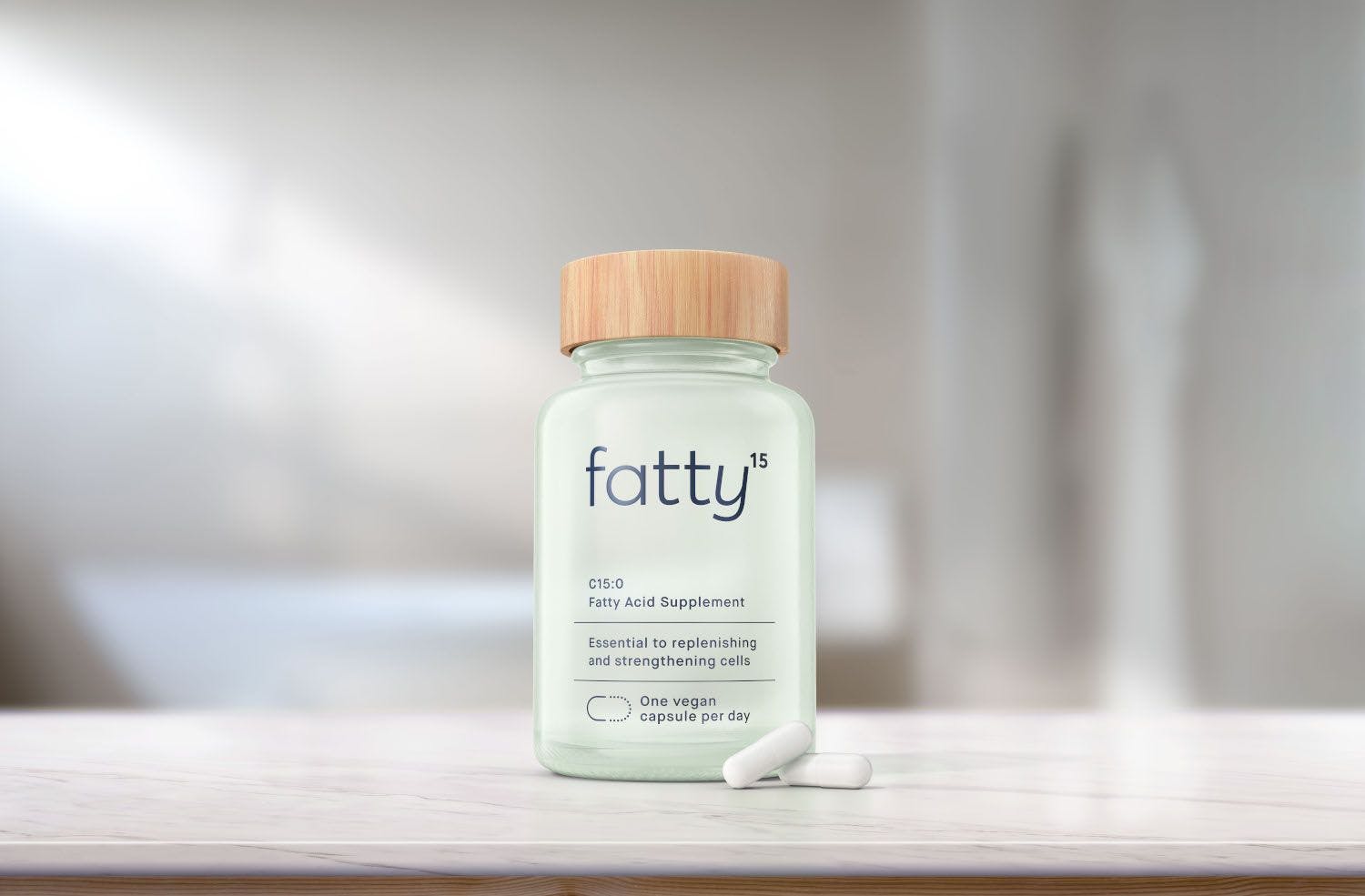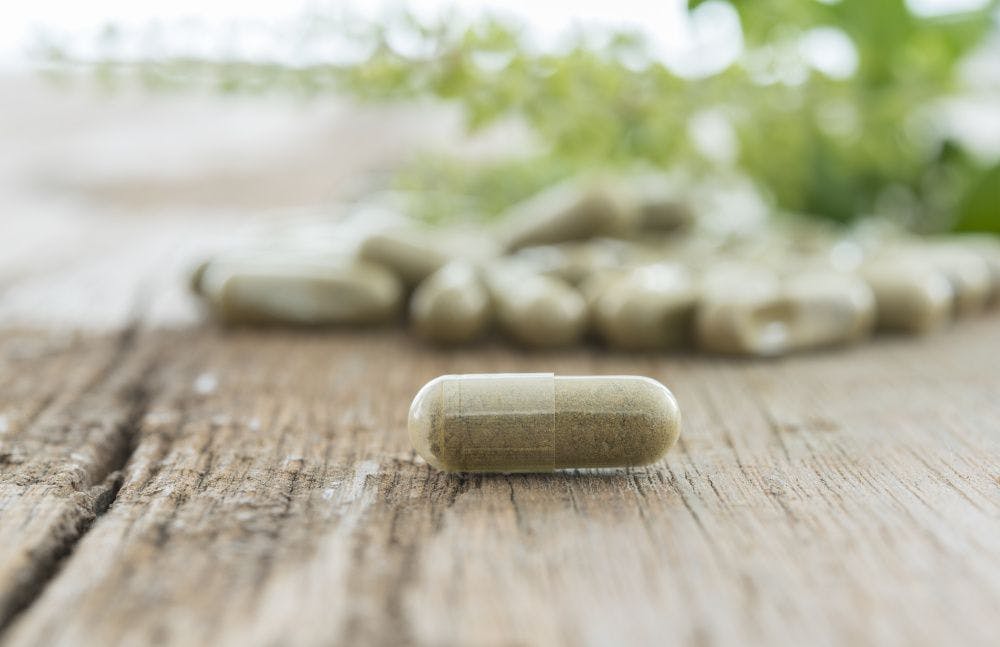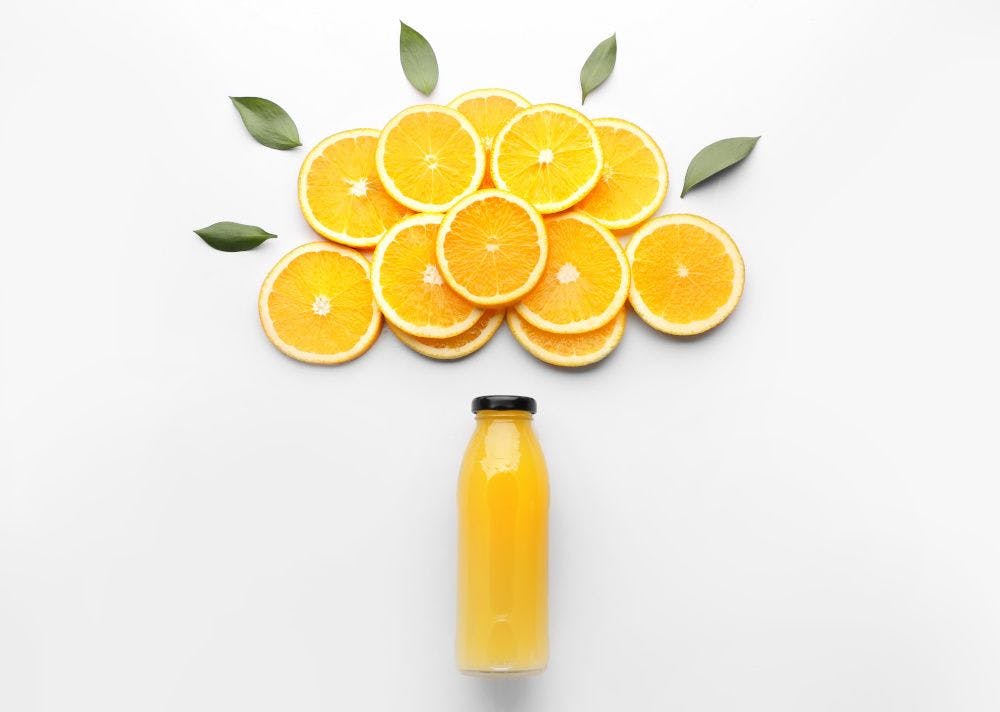Nutritional Outlook’s 2021 Best of the Industry Awards, Service Provider: Botanical Adulterants Prevention Program
BAPP’s crucial mission, warning the botanicals market about adulteration, reaches its 10th year.
Photo © Utah51 - Stock.adobe.com
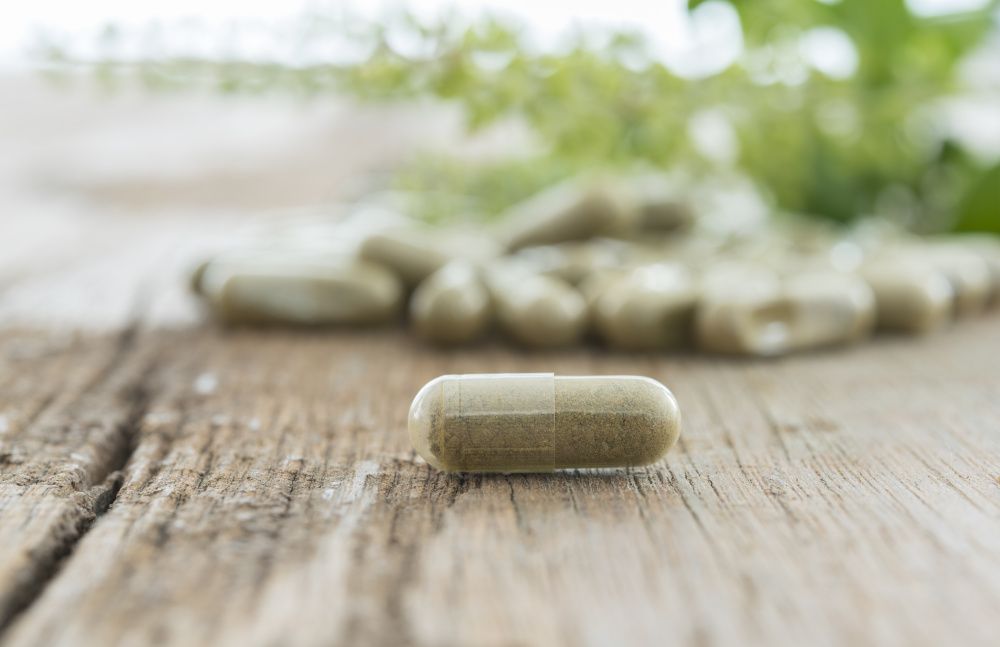
Adulteration in commerce is an age-old problem, one that never has and likely never will go away.
“Adulteration and fraud in the food, spice, and botanical drug market is not new; it has been going on for literally thousands of years,” say the American Botanical Council’s (ABC; Austin, TX) Chief Science Officer Stefan Gafner and Founder and Executive Director Mark Blumenthal. “It’s a truism that some people cheat and do not respect the implicit and explicit rules of society and commerce.”
Adulteration wears many faces in the botanical products market today. It often takes the form of economic adulteration when fraudsters substitute authentic botanical ingredients with cheaper imposters. Plenty of factors contribute to adulteration: the globalization of commerce, the rise of e-commerce, and supply chain turmoil caused by natural disasters and a global pandemic.
It’s pretty bleak. But for every bad actor looking to cheat the market, there is a good actor standing up for legitimate trade. In the botanicals world, that entity is the ABC-AHP-NCNPR Botanical Adulterants Prevention Program (BAPP), whose mission is to “educate members of the herbal and dietary supplement industry about ingredient and product adulteration.”1
Since it started 10 years ago, BAPP has been a partnership among three nonprofit-organizations: the American Botanical Council, the American Herbal Pharmacopoeia (AHP; Scotts Valley, CA), and the University of Mississippi’s National Center for Natural Products Research (NCNPR; University, MS).
On BAPP’s 10-year milestone this year, “The term celebration is not what I would use for the BAPP anniversary,” say Gafner, who serves as technical director of BAPP, and Blumenthal, BAPP’s founder and director. “All of the BAPP partners are in this to improve the quality of herbal dietary supplements for the benefit of the consumer. We might celebrate on the day that adulteration is no longer an issue and BAPP is no longer needed.”
BAPP is still very much needed. BAPP researches and tracks adulteration in the global botanicals market. It reports those findings to those inside the botanicals industry and outside the industry (regulators, the media, the public).
From BAPP, we learn that most adulteration occurring in the botanicals space is still economic fraud. The good news is it’s largely not fraud that presents a public health concern; the bad news is this may be of small comfort to consumers hoping to derive health benefits from a botanical product. “In our experience, there appears to be a greater number of cases of adulteration where the type of adulteration is based on the addition of undisclosed, lower-cost ingredients that not only provides an economic benefit to the seller of the fraudulent material but is also designed to fool the prevalent analytical methods being used in industry analytical laboratories,” Gafner and Blumenthal report. “Such adulteration would almost always be in the form of extracts.”
The adulteration landscape evolves over time, making BAPP’s monitoring vital. For instance, say Gafner and Blumenthal, “One of the unfortunate trends is the occurrence of herbal extract fortification with highly enriched fractions or isolates made by fermentation or chemical synthesis. While this type of adulteration has been around for a while in the essential oil industry, it hasn’t been very common in herbal dietary supplement ingredients to our knowledge.” Adulteration with synthetic ingredients isn’t always surprising either. By now, it’s an “obvious problem” in the turmeric/curcumin market, for instance. But this is not the only adulteration incident that is hard to uncover. For instance, animal-derived fatty acids can be used to adulterate “saw palmetto” berry extracts, a practice Gafner and Blumenthal say is “difficult to detect” using common analytical methods, though it can be done.
“Another issue that we noticed more frequently,” Gafner and Blumenthal add, “is the admixture of different plant parts to an ingredient. This was first reported from goldenseal and Asian ginseng, where undeclared extracts of the leaves or aerial parts were added to root extracts. In the past five years, the same type of adulteration has been reported for ashwagandha roots and more recently also for eleuthero roots.” It’s the transparency that matters here, Gafner and Blumenthal point out. It’s not considered adulteration if a company discloses, both on the certificate of analysis and the finished product label, that it’s added botanical materials from another part of the same plant. “So, for example,” they say, “a ginseng root extract with a relatively high level of ginsenosides that also contains transparently labeled ginseng leaf extract is not adulteration so long as the leaf material’s addition is transparent.”
When it is adulteration, it is a problem. What BAPP brings to the table is an arsenal of educational tools aimed at helping the public understand how, when, and where adulteration can happen—and, most importantly, how to detect and fight it.
The company’s resources include its Botanical Adulterants Prevention Bulletins and Botanical Adulteration Reports providing detailed information on plant-specific adulteration observed in the market. BAPP also circulates its Botanical Adulterants Monitor newsletter containing timely news, science updates, industry alerts, and regulatory alerts, using information gathered from “other published sources in the global medicinal plant literature, as well as reports of relevant regulatory activity internationally,” Gafner and Blumenthal explain.
The key is that many of these materials, especially the longer reports and guides, go through many layers of peer review to ensure their reliability.
“It always starts with an extensive literature search, since all our documents are based to a large extent on published data,” Gafner and Blumenthal explain. “We sometimes add in quotes from industry experts in areas where data are unavailable, especially pricing of ingredients, but we are really cautious about using personal communications in support of adulteration, as we have to avoid publishing any BAPP documents based on hearsay or the sole opinion or view of one expert. If we get industry data, we ask our BAPP experts to review them and verify the accuracy of the data. Once we have chosen an author, this author is in charge of writing the first draft. If there are questions (and there always are), we reach out to experts in the field to help us get the answers.”
Additional reviews are conducted by botanical experts such as Dr. Ikhlas Khan of NCNPR, Roy Upton of AHP, and Steven Foster and John Cardellina. “Eventually, we send each document to experts of the ingredient in question, but also to experts within our BAPP supporters, usually [approximately] 30-40 individuals per document,” Gafner and Blumenthal add. After compiling and addressing the feedback, ABC staff, such as ABC’s Special Projects Director Gayle Engels, then finalize the draft. As a final step, the publication’s layout is done by ABC’s Art Director Matt Magruder. The entire process is labor and time intensive.
Another key BAPP production is its Laboratory Guidance Documents. In essence, these guides provide industry with the “how” to detect adulteration. The documents, which are also peer reviewed, educate readers about current analytical methods for testing for adulteration.
Test methods need to keep up with the adulteration they’re meant to catch. “Adulteration is a bit of a cat-and-mouse game,” Gafner and Blumenthal explain. “The fraudsters try to come up with ways to avoid detection of adulteration by a quality control laboratory using common and prevalent analytical methods. In many instances, as analytical methods get better to find adulterated ingredients, the fraudsters come up with new ways to adulterate (e.g., by manipulating botanical extracts in various ways), making it even more difficult to detect adulterated material. It is important for the quality control groups to be aware of the analytical methods that are easily fooled and replace them with assays that are more specific (i.e., better able to distinguish between the genuine ingredient and its adulterants).”
As of November 2021, BAPP has produced 67 peer-reviewed publications, with more to come. One doesn’t have to imagine how much better equipped the industry is to combat adulteration with these tools in hand.
BAPP’s publications have grown in stature over time—so much so that they are their own standalone publications and no longer just part of ABC’s esteemed HerbalGram journal. They are released in their own electronic versions and exist as standalone publications on the BAPP website. These resources also have global reach, with Gafner and Blumenthal noting that most Botanical Adulterants Prevention Bulletins and Laboratory Guidance Documents can be viewed via ResearchGate by scientists worldwide. BAPP publications have also been translated into Chinese, they’re told. Moreover, Gafner and Blumenthal often speak about global adulteration at international conferences, spreading the word.
The Botanical Adulterants Prevention Bulletins are usually published first “to document and provide confirmation of the available data on adulteration of a specific botanical ingredient,” they say. A Laboratory Guidance Document will be published on the ingredient after that with more information on corresponding analytical methods. BAPP also expanded the supply chain and ingredient market information in the Bulletins “since this appears to be helpful in providing greater understanding of the adulteration issues for many ingredients.”
BAPP has turned the spotlight on herbal supplement and food ingredients like pomegranate, Ginkgo biloba, boswellia, ashwagandha, grape seed extract, cranberry, Aloe vera, ginseng, and many more. This past year, BAPP also made sure to include elderberry, whose adulteration risk rose during the COVID-19 pandemic.
During the pandemic, BAPP warned the public about potential increases in economic adulteration due to supply chain problems, supply shortages, and price increases. “In April 2020 as the pandemic was just in its initial stages, ABC and BAPP sent out a notice to all ABC members, BAPP supporters, and the botanical industry in general, cautioning all responsible players that the increased consumer demand for herbs and other dietary supplements coupled with predicted supply chain shortages and delays would most likely result in the presence in the global market of additional quantities of adulterated, fraudulent botanical ingredients,” say Gafner and Blumenthal. “ABC suggested that responsible players increase their identity testing programs to help ensure that they were sourcing authentic material.”
BAPP doesn’t come by these findings easily. After all, there isn’t always a clear starting point or an easy source of information when one is trying to unmask hidden fraud in the market. For instance, they say, “The information gathering of adulteration isn’t any different during a pandemic than in other times. However, there aren’t any publicly available data on specific topics (e.g., the ingredients for which the pandemic has led to a supply shortage).”
That’s when BAPP and its partners’ diligent research and outreach come into play. “In the case of elder berry,” they continue, “BAPP has initiated a request for information from contract analytical laboratories, reputable suppliers, and manufacturers of elder berry ingredients. For other plants, such as ashwagandha roots, forsythia fruits (which is in high demand in the traditional Chinese Medicine community), or the mushroom category (e.g., reishi mushrooms), which have seen large increases in sales compared to previous years, we don’t have much information. We know that several academic groups are investigating the quality of elder berry products on the market, but these data have yet to be published.”
For what it’s worth, there is no clear consensus yet on just how the pandemic impacted botanical adulteration. “We are not able to determine at this time whether the incidence of adulteration (i.e., the frequency) or the type of adulteration has increased during the pandemic,” say Gafner and Blumenthal.
There’s also no clear answer as to what the extent of adulteration has been. “Michal Ichim published a series of papers2 in which he and his co-authors attempted to find an answer to this question,” they point out. “One of the papers reviewed publications using genetic methods to detect botanical ingredient adulteration, while the second reviewed botanical microscopy, and the third chemical methods. Interestingly, the same percentage of adulterated materials (27%) was reported in the review paper on genetic authentication as in the paper on chromatographic and spectroscopic authentication, contrary to 41% adulteration reported when botanical ingredients were assessed by microscopy.”
BAPP is always cautious when drawing conclusions about adulteration, because there’s not always a clear explanation for why it’s happening.
“One of the challenges in the interpretation of the results, especially when evaluating the percentage of adulterated ingredients, is the variability in the definitions among authors of exactly what constitutes adulteration, and the changes over time in the criteria for adulteration,” Gafner and Blumenthal explain. “Taking ginkgo leaf extract as an example, for which we have a large number of published data, the earliest report of ginkgo leaf extract adulteration in 2003 noticed that one out of 10 commercial samples was fortified with rutin. A 2005 paper reported fortification with quercetin in addition to rutin, eventually leading to the establishment of quercetin/kaempferol ratio specifications for the detection of adulteration. The possibility of using Japanese sophora extract (which contains some of these compounds) as an adulterant was mentioned for the first time in a 2010 paper, leading to further method developments for ginkgo leaf extract analysis and the proposal to use genistein as a marker compound for adulteration with Japanese sophora in 2014, adding another albeit controversial criterion to determine adulteration of ginkgo leaf extracts. While the reported adulteration rate of ginkgo products is generally below 50% prior to 2014, a number of subsequent papers reported that 72%-88% of commercial samples analyzed by the researchers were adulterated. It is not clear if this change is due to an increase in adulteration, an expansion of the number of criteria and target analytes to detect adulteration, or an improvement in the analytical methods to detect adulteration. In short, we don’t really have a reliable baseline or comprehensive enough data to answer this question.”
Support for BAPP’s nonprofit work has grown over the years. In the beginning, say Gafner and Blumenthal, some were worried about how BAPP’s findings would make the industry look. “There was a good amount of skepticism from parts of the herbal dietary supplement industry at the start of the program with concerns that BAPP bringing some of the adulteration issues to prominence may make the whole industry look bad,” they say. The prospect of reducing adulteration undoubtedly wins out, however, given that “responsible suppliers have struggled with unfair competition from low-cost adulterated ingredients for far too long, and saw BAPP as a means to explain quality differences among brands and emphasize the importance of the authenticity of botanical ingredients.”
Gafner and Blumenthal note that, “To date, BAPP has been financially supported and/or publicly endorsed by over 200 entities.” This includes both members of the U.S. and international medicinal plant industry, including ingredient suppliers and product manufacturers, as well as third-party labs, trade associations, professional research and clinician organizations, research centers, and more. They add that “BAPP’s financial support has been relatively stable over the past five years, after substantial growth during the initial five years. Most responsible industry members that support BAPP continue to do so, although there have been some companies that have dropped their support, for a number of reasons. This is to be expected as numerous companies have had changes in ownership and/or management, some of which may not understand the vital importance of supporting such a unique research and educational international program like BAPP.”
They conclude: “BAPP would not be possible without the generous financial support of companies representing dietary supplement ingredient suppliers, manufacturers, trade associations, contract analytical laboratories, and analytical instrument manufacturers.”
BAPP has also expanded its partnerships with other education and resource providers. In 2021, ABC and BAPP signed a memorandum of understanding with the International Association for the Advancement of High Performance Thin Layer Chromatography (HPTLC Association) in Switzerland so that ABC members and visitors to BAPP’s website can access the HPTLC Association’s research, analytical, and educational content, including its extensive Methods Collection for identifying herbal ingredients.
“One of the main positive outcomes of these partnerships is the exchange of information,” Gafner and Blumenthal say. “You mentioned the partnership with the HPTLC Association, which has a large collection of methods to identify botanical ingredients, and to detect adulteration by HPTLC. Raising the awareness of this resource may prompt some in the industry to have a look at the collection and possibly add some of these methods to their quality control protocol. Another example is the 2019 workshop on botanical ingredient adulteration which BAPP organized as part of the 67th Annual Conference of the Society for Medicinal Plant and Natural Product Research (GA), which was held in Innsbruck, Austria. Sometimes, collaborations with research centers cumulate in the development of a new method to detect adulteration of a specific botanical ingredient. An example is the 2021 publication3 of a NMR method to detect the adulteration of turmeric extracts. Again, this should benefit industry, especially for botanicals for which authentication is difficult and methods are scarce.”
And always, at the core, is the hard work of BAPP’s collaborators. Gafner and Blumenthal note that BAPP “has had active participation from several expert colleagues and industry members who volunteered to write some of the documents we published. And we had 181 different peer-reviewers (excluding BAPP management) from the herbal dietary supplement industry, contract analytical laboratories, academia, government, trade organizations, and the nonprofit sector over the years in the U.S. and internationally for the Bulletins and Laboratory Guidance Documents. Some of these reviewers have looked at over 20 documents in the past 10 years, and some of our documents have had up to 29 peer reviewers’ input from these experts.”
“ABC and BAPP’s partners are truly grateful for the wide range of support, recognition, and endorsement that BAPP has received and continues to receive across such a broad spectrum of the responsible elements of the herb and dietary supplement industry and the extended research and integrative healthcare communities,” they say.
So, BAPP provides a wealth of information. How companies choose to use that information to protect themselves and their customers is up to them. Have many companies changed their practices based on tips from BAPP? In February 2020, BAPP sent a survey to ABC members to gauge BAPP’s effect. “Approximately half (50) of the 103 respondents were industry members, with others being healthcare professionals, from academia, consultants, or respondents who declined to provide such information. Based on the feedback from the industry members, 24 companies implemented new quality control measures, 18 changed suppliers, and 15 changed ingredient specifications based on input from BAPP,” say Gafner and Blumenthal. At the very end of the chain, “Consumers benefit from improved measures by having access to products that have gone through a more robust quality control system.”
“Using BAPP information doesn’t necessarily mean that the product quality has improved (especially since our industry supporters already are among the best in town),” they add, “but we certainly hope that it ultimately leads to better products on the market.”
Adulteration will exist as long as there is a propensity to defraud the market for money. There will never not be a need for BAPP. Nutritional Outlook previously awarded BAPP in its Best of the Industry awards in 2016; in 2021, we again salute BAPP’s service for the past decade as a lookout for the botanicals market, the industry, and consumers.
“In general and historically, adulteration has always been part of commerce…Unfortunately, it is predictable that it will continue, despite our best efforts,” say Gafner and Blumenthal. “The best we can do is try to ensure that responsible, ethical members of the industries that utilize botanical ingredients know about BAPP, know about the free access to all of BAPP’s extensive library of publications on adulteration, and will use BAPP publications to help ensure that they are not victimized by the unscrupulous sellers of fraudulent ingredients. So, as far as we’re concerned, this creates a form of ‘job security’ for all of us at BAPP, because as much as we produce high-quality, reliable information for the use of industry members and others, the fact remains that someone will still try to cheat, and people cannot let down their guard. After all, the herbal products industry is about providing healthful products for consumers to help them improve and maintain their health, naturally.”
Hear bonus interviews with our award winners on The Nutritional Outlook Podcast!
References
- Botanical Adulterants Prevention Program website
- Ichim MC et al. “Chemical authentication of botanical ingredients: A review of commercial herbal products.” Frontiers in Pharmacology. Published online April 15, 2021.
- Kim SB et al. “The untargeted capability of NMR helps recognizing nefarious adulteration in natural products.” Journal of Natural Products, vol. 84, no. 3 (March 12, 2021): 846-856
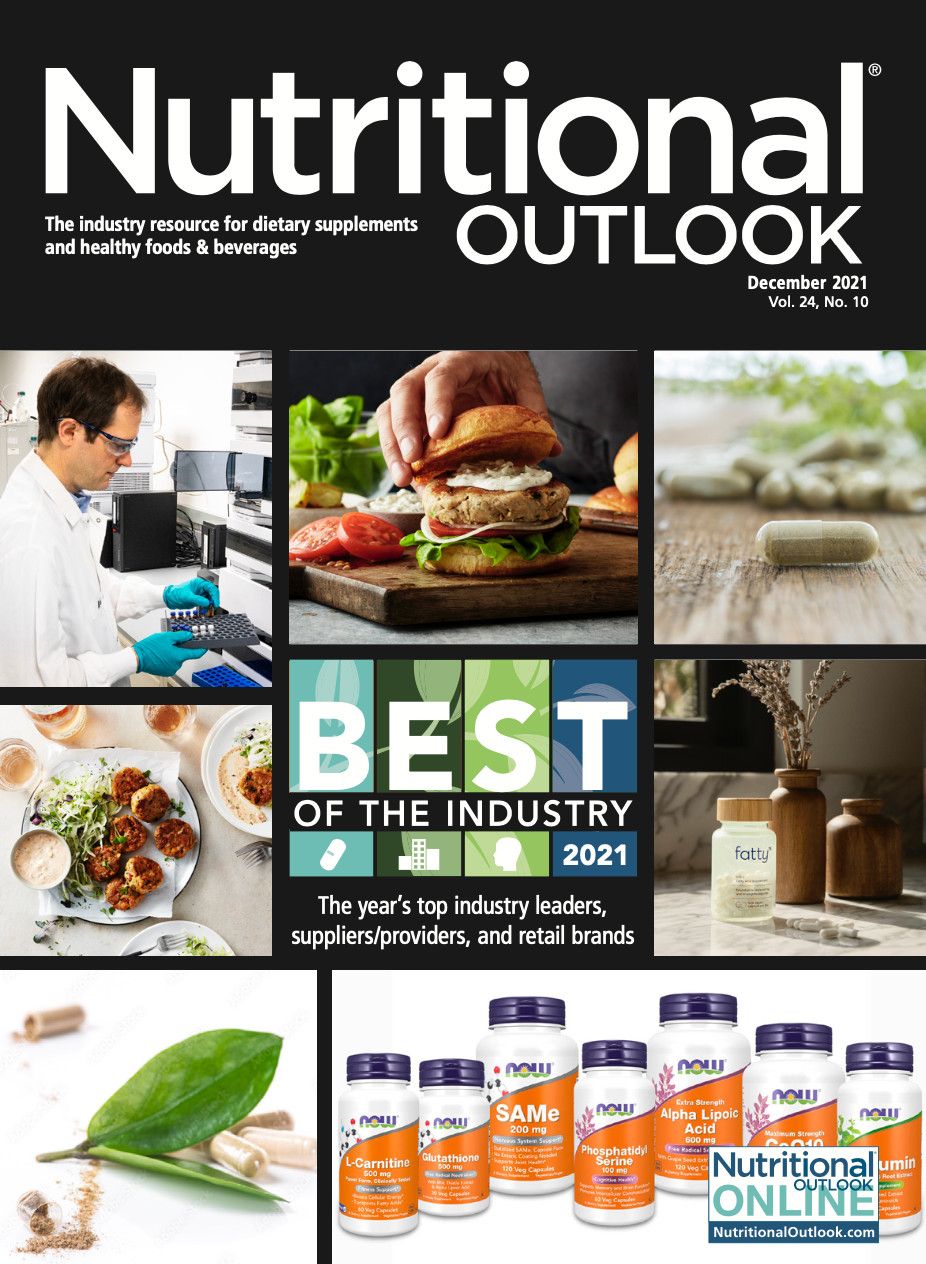
Newsletter
From ingredient science to consumer trends, get the intel you need to stay competitive in the nutrition space—subscribe now to Nutritional Outlook.
Radicle Science has launched Radicle Discovery Gen 2
July 22nd 2025Radicle Science announced the launch of the latest version of its proof-as-a-service platform, Radicle Discovery Gen 2, which combines rigorous clinical trials, AI, data, and crowdsourcing to validate the effects of natural products across diverse populations.

.png&w=3840&q=75)

.png&w=3840&q=75)



.png&w=3840&q=75)



.png&w=3840&q=75)



